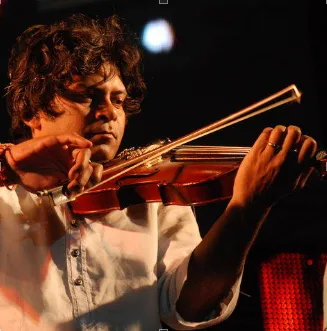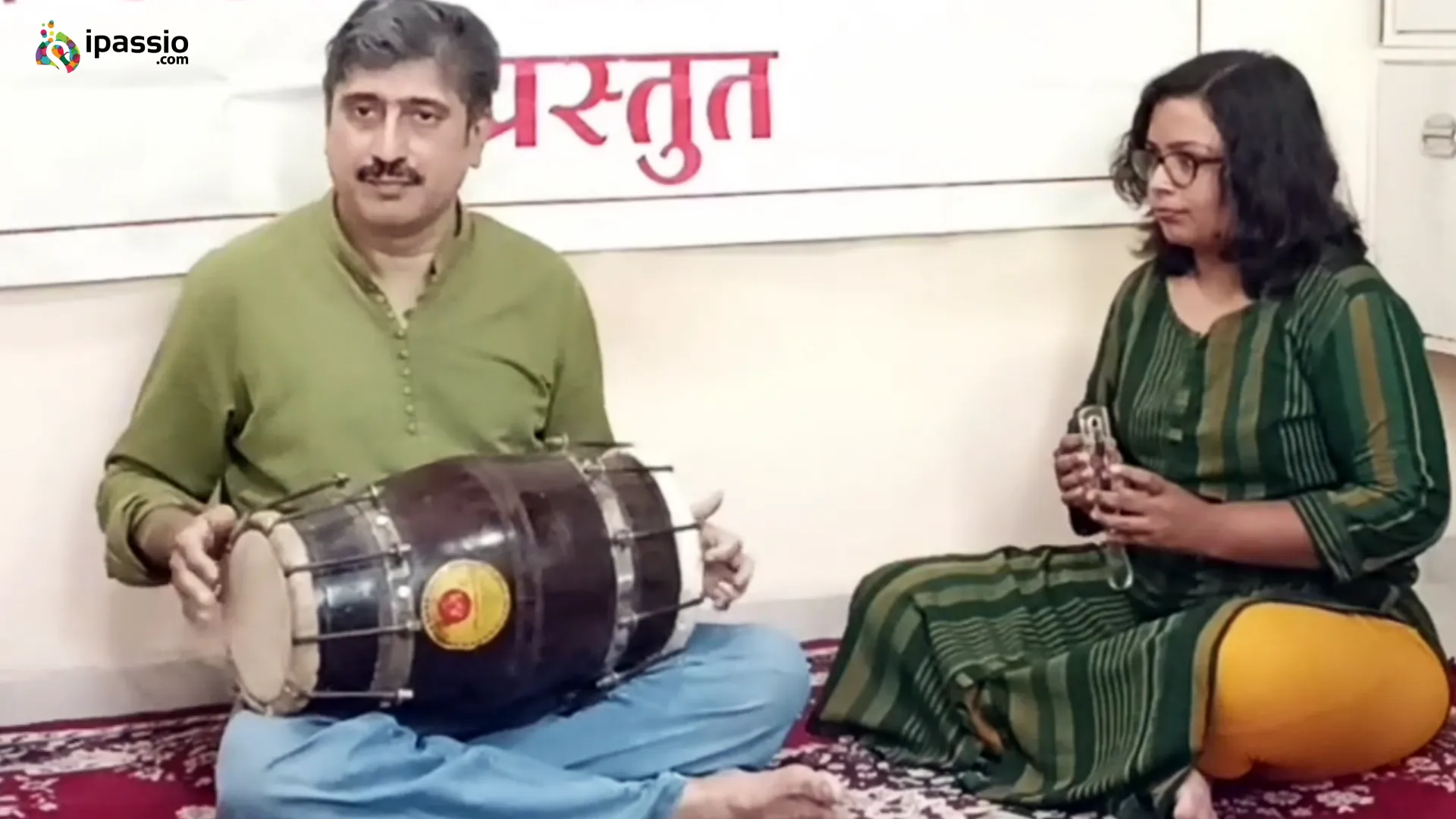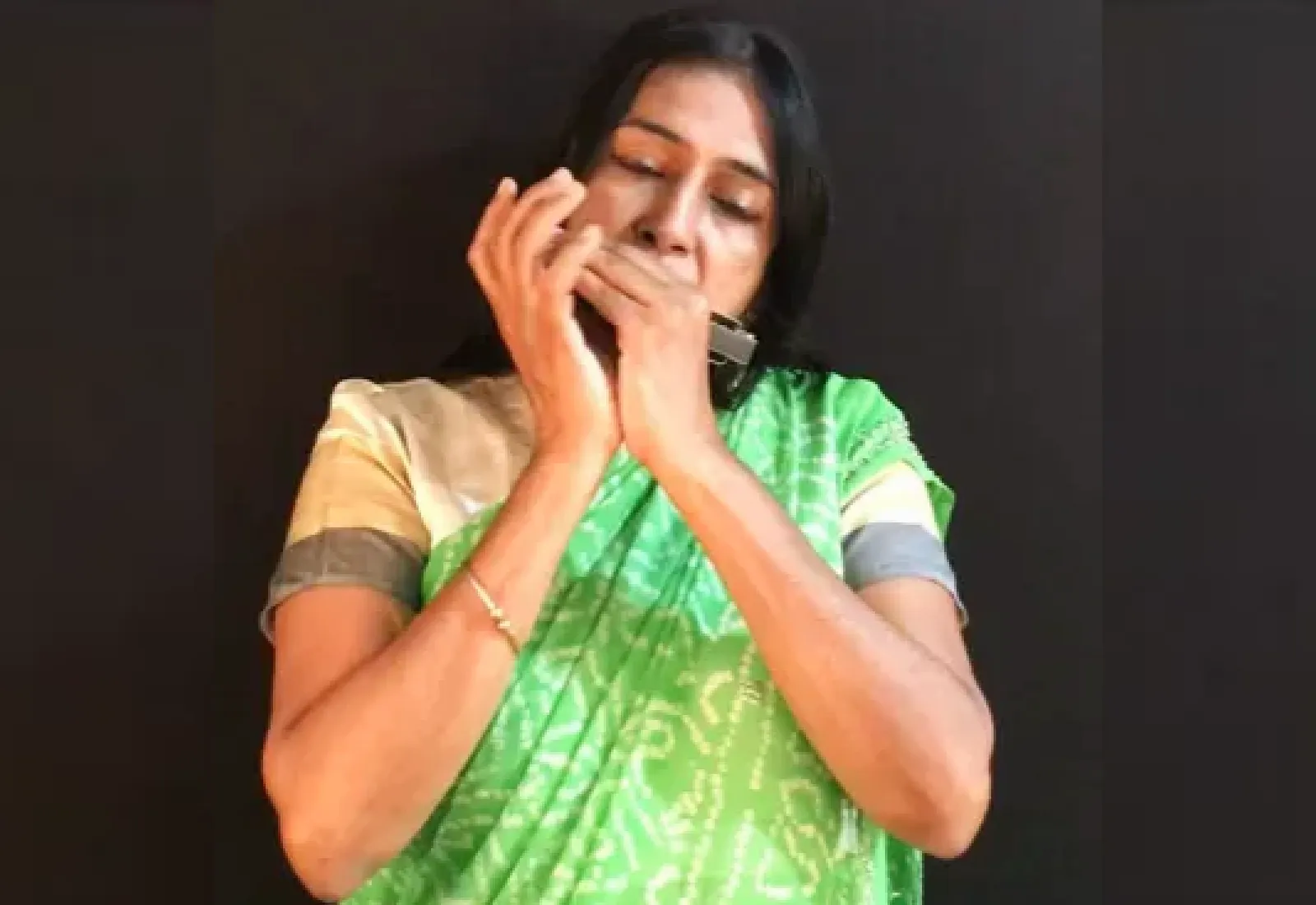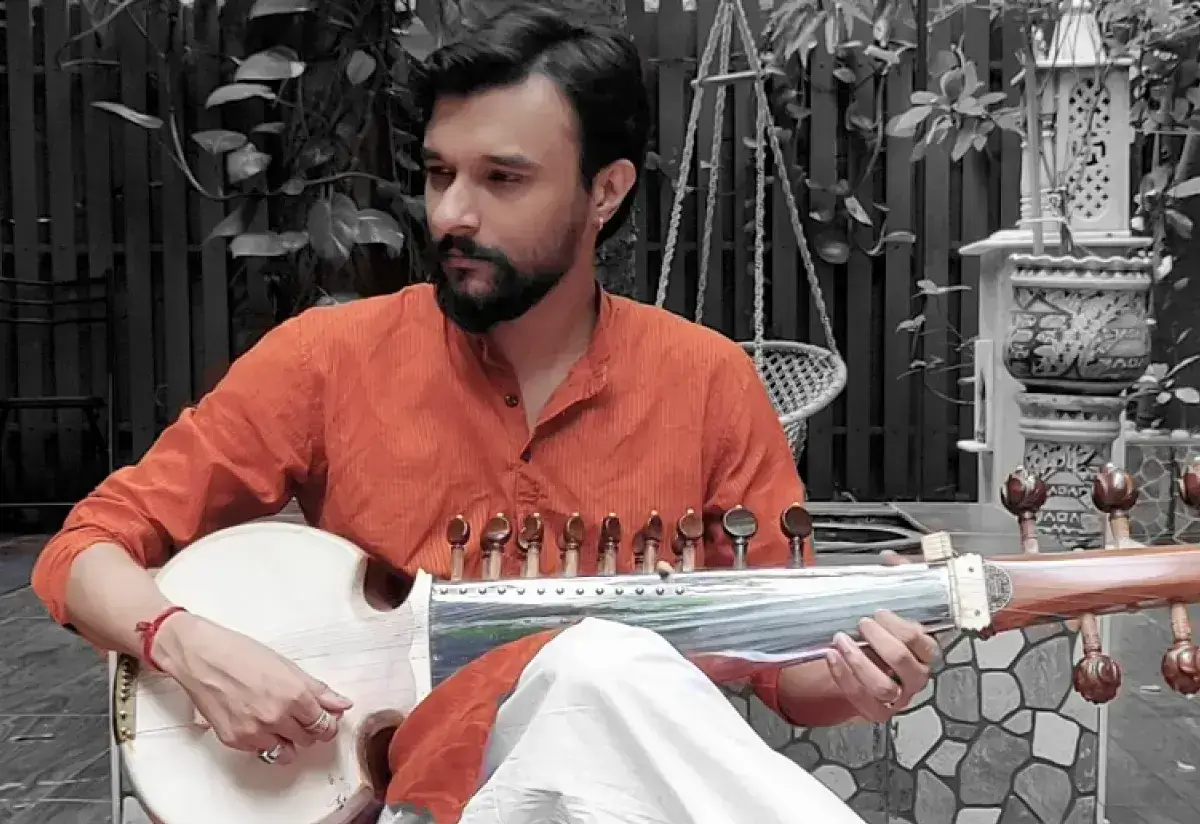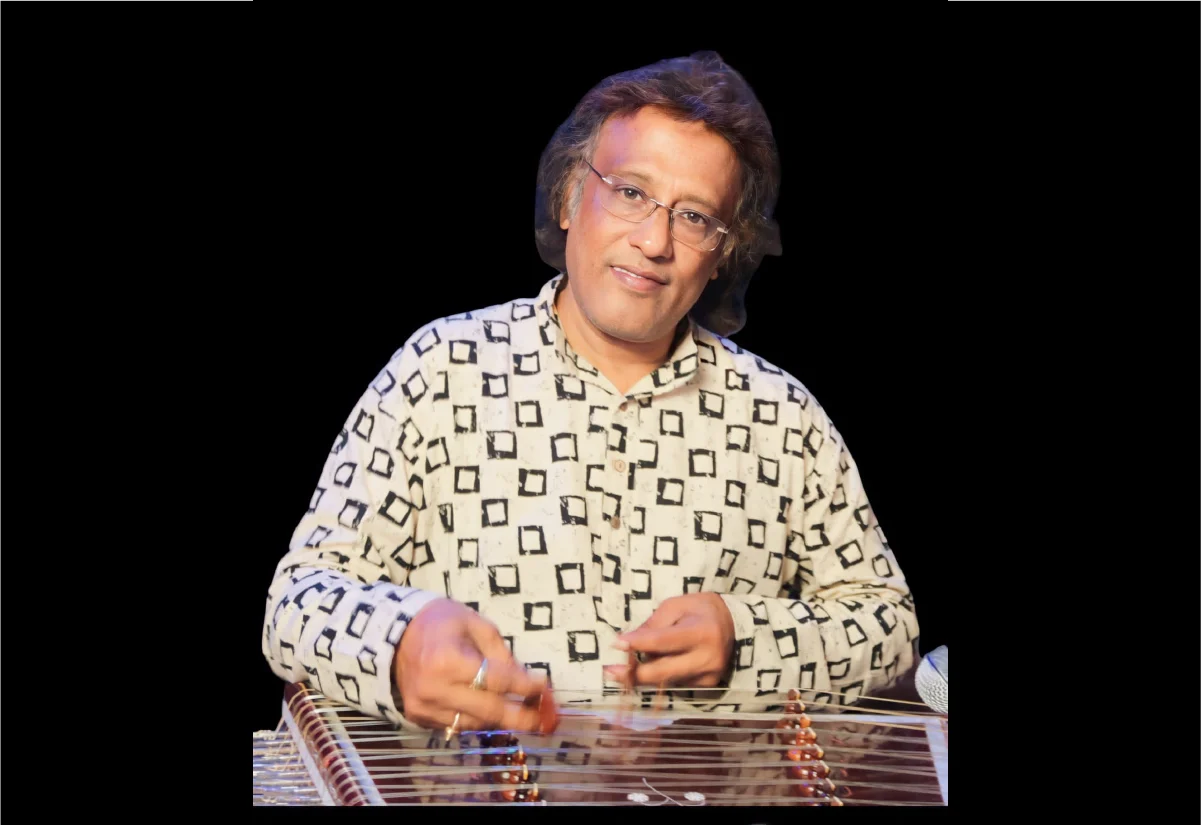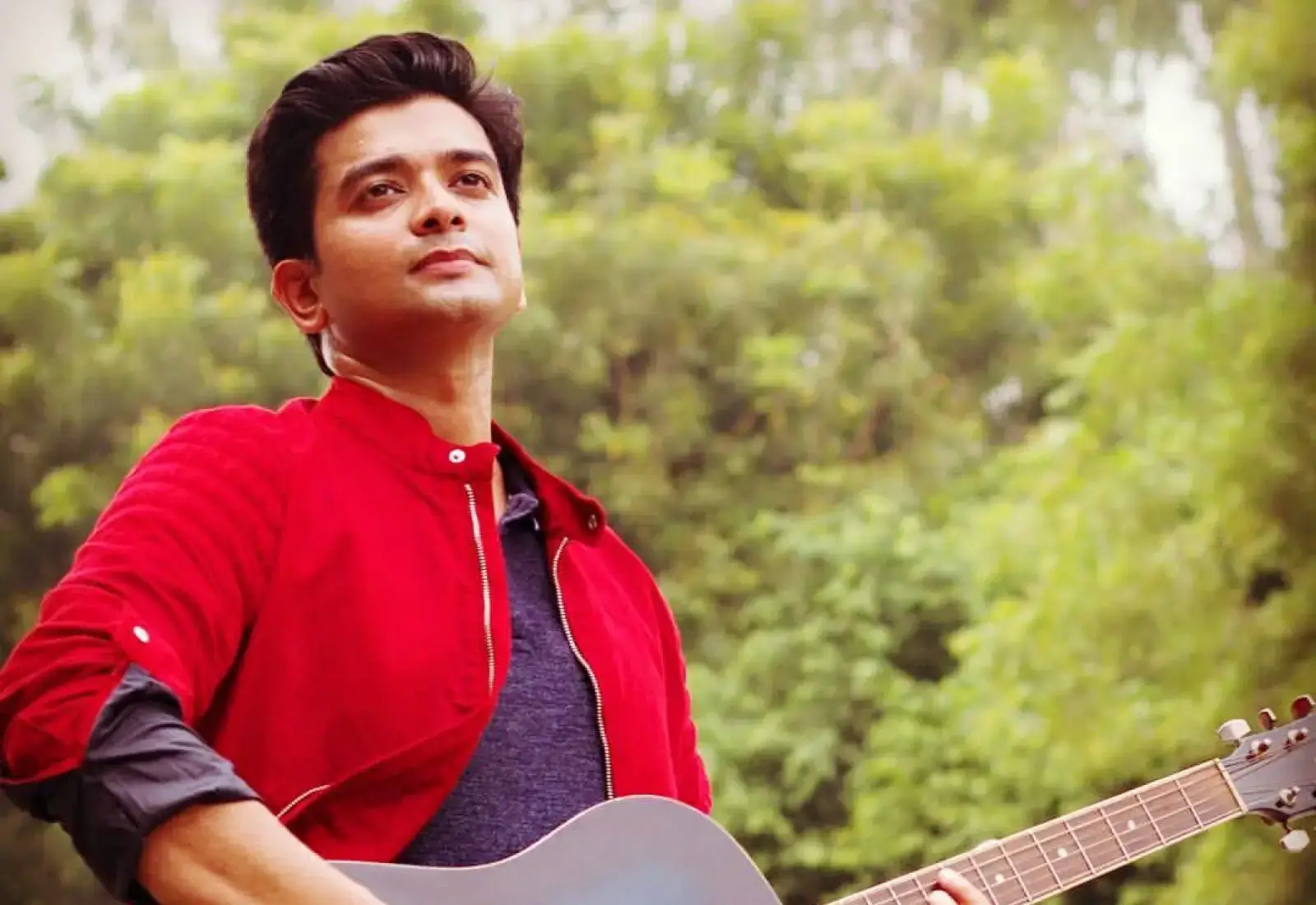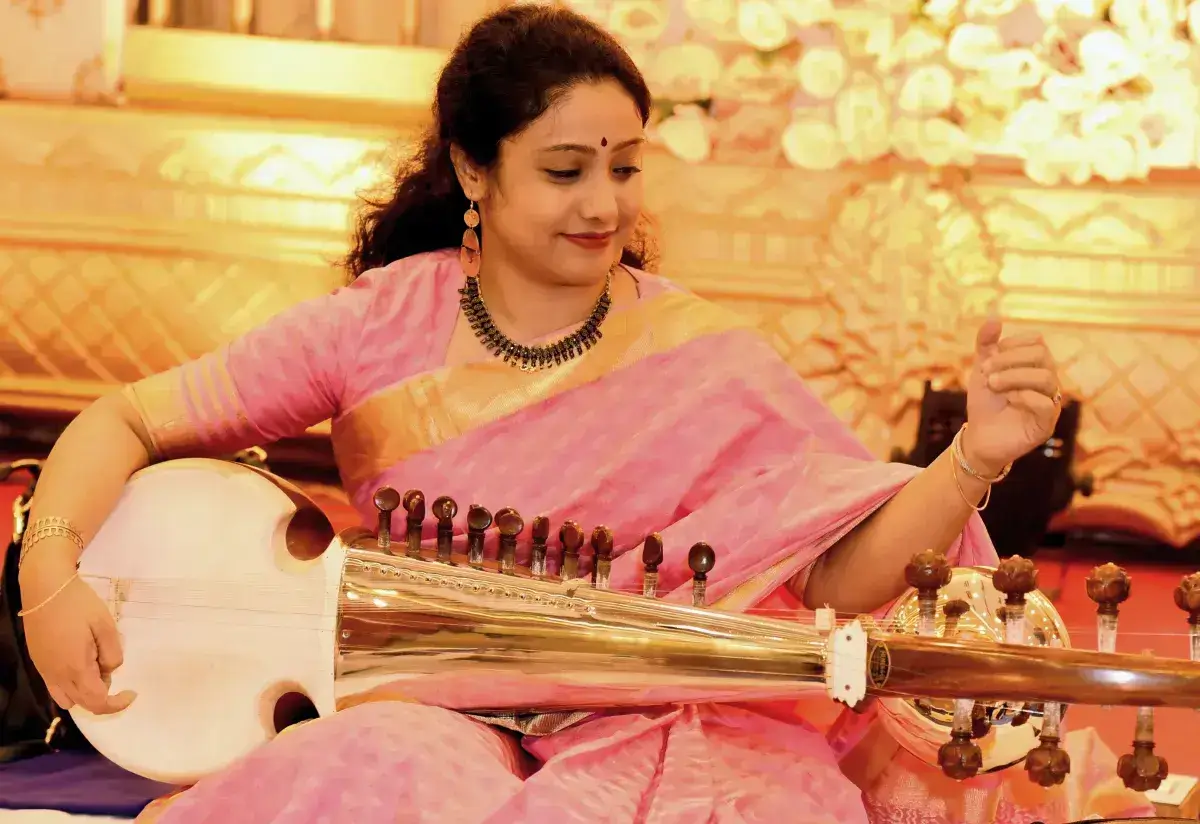Tanpura Instrument Overview
Even if you don’t know the name, you’ve likely heard the distinctive tone of the Tanpura instrument in Hindustani and Carnatic classical music. Also called a Tambura, Tamura, Tambora, and Tanpuri, this long-necked string instrument produces a continuous, harmonic drone in support of a melody. It is classified as a plucked chordophone because of the resonance of the strings. This traditional instrument is sometimes replaced by an electronic version, and, more recently, mobile apps. Although a drone in music compositions can be heard in many musical traditions, it is widely associated with classical Indian style.
The Tanpura instrument plays a key role in classical Indian music by producing the adharaswara (base note) for a composition, as well as adding to the atmosphere of stage performances. The drone is made from a pattern of repeating notes from the raga, or melody. As a background instrument, it doesn’t produce a specific note, melody or rhythm, but more of a backdrop to provide contrast for the raga. It also serves as a musical anchor to the soloist during a classical performance. Heard widely in Indian classical music, the Tanpura (both stringed and electronic) has also grown in popularity in genres all over the world.
Traditionally made from tun wood, the stringed Tanpura consists of metal (typically steel) strings attached to the neck by wooden pegs and stretched across the bridge and soundboard. When the strings are plucked, the vibrations move through the soundboard, called a tabli, and into the hollow body and gourd to produce sound. Traditional Tanpuras look similar to the sitar but, among other things, lack frets and have only four to five strings.
History of Tanpura Instrument
The harmonic drone component of Indian classical music dates back to ancient times. Over 2,000 years ago, the foundational text on the arts, Natya Shastra, identified the root ensemble of music as rhythm, melody and harmonics. These three concepts are represented musically as talas, ragas and drone. The drone noise is meant to form a series of notes within the raga, providing a base tone as a backdrop for everything else.
Early evidence of harmonic drones came in other instrumental forms, including other stringed instruments and the wind instrument ottu. It is believed that the tanpura musical instrument as we know it today evolved from the sitar, which also includes drone strings, called sympathetic strings. By the 16th century, the tanpura had become a standard addition to classical ensembles, as evidenced by its presence in paintings and compositions from that era.
The electronic tanpura instrument was invented in the late 19th century by G Raj Narayan, an engineer and musician. Beginning first as electronic boxes with transistors that imitated the sound of the tanpura, the electronic versions evolved to loop recordings of the traditional tanpura. Though controversial among performing artists, electronic tanpura is undoubtedly a practical accompaniment for many musicians. Most recently in the 2000s, mobile apps have been developed to make the classic tanpura sound even more accessible.
Types of Tanpura
There are three types of tanpura musical instruments, each of which differs in size and tone. The exact measurements vary between instrument makers and the figures below are averaged estimates. These three categories are also represented by many electronic tanpuras and apps.
Instrumental tanpuras are the smallest version, with a length typically below 115 cm (roughly 3.5 ft). Typically accompanying sarod and sitar compositions, the instrumental tanpura is tuned around the key of C/Sa.
Female tanpuras are medium-sized, at around 130 cm in length (a little over 4 ft), and are typically used to accompany female singers. Tuned near the key of G/Pa, this version is pitched between the instrumental and male versions.
Male tanpuras are the largest, with a length of 150 cm (nearly 5 ft), and are typically used to accompany male singers. The sound produced by the male version is louder and sustains longer than the others. This tanpura is also tuned near the key of C/Sa, but is pitched lower than the instrumental version.
Tanpura Mechanics
The pitch of a tanpura depends on the thickness of the strings used. The thicker the strings, the lower the pitch and vice versa. Each string is attached to a tuning peg that adjusts the tension of the strings. Looser strings produce a lower pitch while taut strings produce a higher pitch. The standard for tuning a tanpura depends on the number of strings, but typically follows a pattern established within the range of a particular raga. For example, a four-stringed tanpura may be tuned to a fifth, basic note, and two octaves of a note in the raga.
Many electronic tanpuras have multiple settings that need to be adjusted before playing that change the pitch, tone and volume. Some versions of the electronic tanpura have the ability to save certain selections for repeated use.
Tanpura Playing Techniques
How to Play the Tanpura?
The Tanpura is held and played sitting upright and resting on either the floor or the lap of the player. This is the traditional technique, but it may also be played while lying horizontally on the lap or floor in front of the player. The strings are plucked in a continuous pattern with the pads of the fingertips. The plucking of the strings is meant to be soft and consistent, setting the strings to a gentle vibration. In addition to being an accompaniment to musical compositions and performances, the Tanpura is also practiced and listened to on its own. It is a popular choice for accompanying meditation and yoga in the background.
The drone is meant to be constant, but there is a slight variation in playing Tanpura. The strings are plucked in a regular, repeating rhythm. When the last note of the rhythm is played, the pattern repeats after a slightly longer pause. This brief period allows the last string to echo slightly longer. This is to give the impression of a living vibration. Not even the electronic Tanpuras are meant to play a mechanical sound, as the harmonic component of Indian classical style is meant to sound flowing.
Notable Tanpura Players
Even with the advent of electronic tanpuras, there are many talented and renowned Tanpura players in Indian classical music today:
Chandrakantha Courtney
Helen Francis
Indira Sheshadr
Jayant Naidu
Kaushiki Chaktraborty
Nellai Krishnan
Prakash Naik
Prasanna Athele
Ranjani Sivakumar
Soman Pillai


